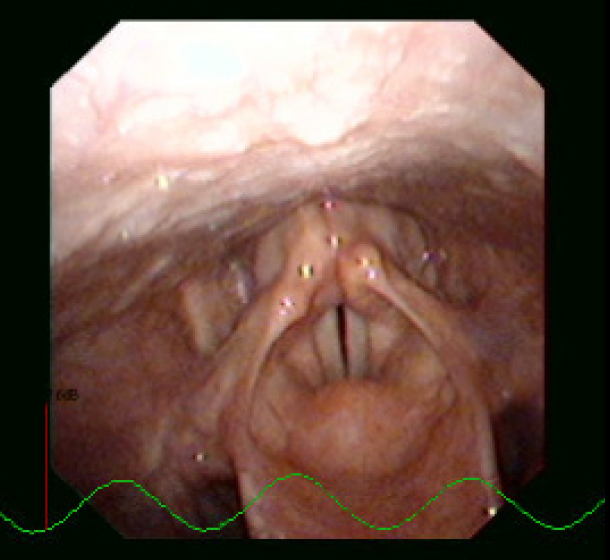When looking at the videos from the endoscopy study in 2007 certain patterns are seen in the laryngeal gestures AND the waveform within each mode. A still image for each of the modes was produced from the videos.
The Laryngeal gestures and the Laryngograph waveforms are more to be seen as patterns of progression from mode to mode, rather than absolutes. The larynx, the laryngeal gestures and the waveforms often differ from singer to singer, some singers have really weird waveforms, but still the patterns often show similar features. The progressive change in the patterns can be used as a guideline on how to identify the modes for an individual singer.
On the stills from the videos and on the video itself both the laryngeal gestures and the waveform are seen.

Notice the visible gap between the vocal folds, which is bigger at the back. You can see that the back wall of the larynx is relaxed leaving the larynx open so you can see the vocal folds easily. You can also see the aryepiglottic fold is stretcheded and relaxed and the opening of the larynx (the laryngeal inlet) has a shape of an ‘open’ funnel which is rather wide at the top.
Also Notice the Neutral with air laryngograph waveform has a sinusoidal shape. This is because there is no contact between the vocal folds due to the gap, which means that a lot of air is added to the sound and the volume is soft. In another example of Neutral with air there is the initial sinusoidal waveform but a brief upward spike indicating momentary closure of the vocal folds.
This information comes from a study Visual Vocal Mode Test Study on stills, with the title ‘Laryngeal gestures and Laryngograph data associated with the four vocal modes as described in the Complete Vocal Technique method of singing teaching’. This study was presented by Cathrine Sadolin and Julian McGlashan at BVA ‘Choice for voice’ conference in London, England, 2010.
